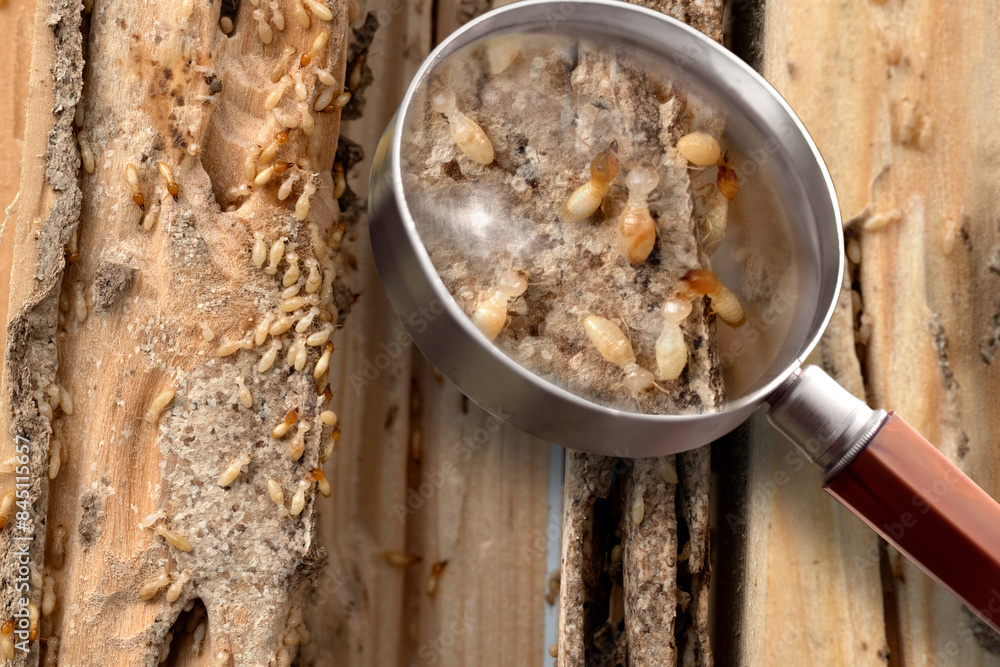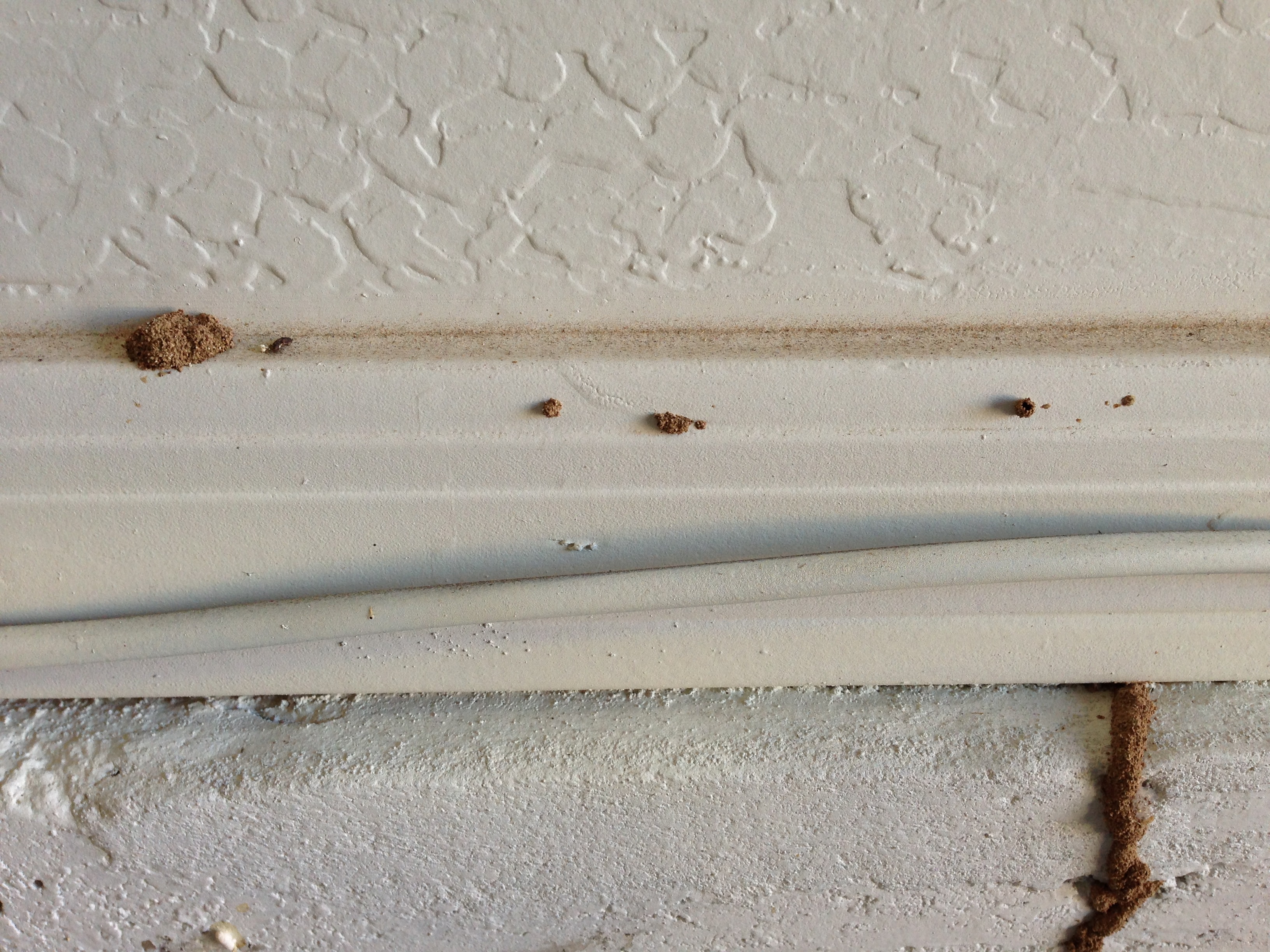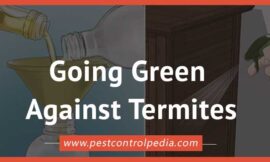When it comes to maintaining a safe and comfortable home, few things are as crucial as keeping an eye out for potential pests. Among these, termites can be particularly insidious, often causing damage long before their presence is detected. One of the telltale signs of a termite infestation is the appearance of termite pinholes in drywall. These small, often overlooked openings can signal a much larger problem lurking behind your walls.
Understanding the significance of termite pinholes is essential for homeowners. Early detection can mean the difference between a minor repair and a major renovation. The sooner you recognize the signs of a termite invasion, the more effectively you can implement control measures to protect your property.
In this guide, we will delve into the world of termite pinholes, exploring what they are, how to identify them, and why they matter. We will also provide you with practical tips for early detection and effective control strategies to safeguard your home from these destructive pests.
Whether you’re a new homeowner or have lived in your house for years, this information will be invaluable in helping you maintain a termite-free environment.
Table of Contents
ToggleUnderstanding Termite Pinholes

What are Termite Pinholes in Drywall?
Termite pinholes often referred to as "swarmer exit holes", are tiny holes found in drywall, which indicate that termites have been at work. These pinholes are generally small, often just the size of a pencil lead, and can sometimes go unnoticed until they become a bigger issue.
How Termites Create These Holes
Termites are wood-eating insects that feed on cellulose, which is found in wood and other plant materials. As they consume the wood, they create tunnels inside it. The pinholes are the exit points where termites push out the debris and frass (termite droppings) from their tunnels. This process can lead to significant damage over time if left unchecked.
Importance of Recognizing Termite Pinholes
Identifying termite pinholes is crucial for several reasons:
- Early Detection: Spotting these holes early can help homeowners take action before the infestation worsens.
- Preventing Damage: Understanding that pinholes indicate termite activity can prevent extensive structural damage to your home.
- Professional Intervention: Recognizing the signs can prompt homeowners to seek professional pest control services, which can effectively eliminate the problem.
Being aware of termite pinholes and their implications is essential for maintaining a safe and sound living environment.
Which type of termite causes termite pinholes in drywall?

Subterranean Termites
Subterranean termites are the most common culprits behind termite pinholes. They live in soil and create tunnels to access wood and cellulose materials in structures. When they tunnel through drywall, they often leave small pin-sized holes, which can sometimes be filled with soil or mud as they exit. These holes are typically less than 1/8 inch in diameter and serve as exit points for their waste.
Drywood Termites
Drywood termites, on the other hand, infest dry wood and do not require contact with the soil. They create pinholes as they eat through the wooden structures, but unlike subterranean termites, they do not leave behind soil in these holes. The damage they cause is often more localized, and their activity can be harder to detect until significant damage has occurred.
Identifying Termite Pinholes

Visual Inspection Techniques
When it comes to identifying termite pinholes, visual inspection is the first and most crucial step. This involves carefully examining the affected areas, such as wooden structures, walls, and floors, for any signs of termite activity. It's important to have a keen eye and pay attention to even the smallest details to spot these tiny holes.
Characteristics of Termite Pinholes
- Size: Termite pinholes are typically very small, ranging from the size of a pinhead to slightly larger. They are often difficult to spot with the naked eye, so it's important to inspect closely.
- Shape: These holes are usually round or oval in shape, with smooth edges. They may appear in clusters or scattered throughout the affected area.
- Location: Termite pinholes are most commonly found in areas where termites have been feeding, such as wooden beams, joists, and skirting boards. They may also be present in drywall or plaster walls.
Additional Signs of Termite Activity to Look For
While termite pinholes are a clear indication of termite activity, there are other signs to look for as well:
- Mud tubes: These are the tunnels that termites build to travel from their nest to their food source. They are made of soil, saliva, and wood particles and can often be found on the exterior of buildings or in crawl spaces.
- Discarded wings: When termites swarm, they shed their wings, which can be found near windows, doors, or other entry points.
- Hollow-sounding wood: If you tap on wooden structures and they sound hollow, it could be a sign of termite damage.
By being aware of these signs and regularly inspecting your property for termite pinholes and other signs of termite activity, you can catch an infestation early and take steps to address it before it causes significant damage.
Preventing Termite Pinholes

Importance of Regular Home Inspections
Regular home inspections are crucial for identifying and preventing termite pinholes before they cause extensive damage to your property. These inspections allow you to catch any signs of termite activity early on, making it easier and more cost-effective to address the issue. By scheduling annual or bi-annual inspections, you can ensure that your home remains protected against these wood-destroying insects.
Tips for Maintaining a Termite-Resistant Home
There are several steps you can take to maintain a termite-resistant home and prevent the formation of termite pinholes:
- Eliminate any sources of moisture around your home, such as leaky pipes, gutters, or standing water.
- Ensure that your home's foundation is properly sealed and that there are no cracks or gaps that could provide entry points for termites.
- Keep firewood, mulch, and other organic materials at least 6 inches away from your home's foundation.
- Regularly inspect and treat any exposed wood on your property, such as fences or decks, to prevent termite infestations.
Role of Professional Pest Control Services in Prevention
While there are many steps you can take to prevent termite pinholes on your own, it's often best to rely on the expertise of professional pest control services. These professionals have the knowledge and tools necessary to thoroughly inspect your home for signs of termite activity, identify any potential entry points, and implement effective treatment and prevention strategies. By working with a professional, you can ensure that your home remains protected against termites and other wood-destroying pests.
Repairing Termite Pinholes in Drywall
Necessary Materials and Tools
To repair termite pinholes in drywall, you'll need the following materials and tools:
- Drywall compound (also known as joint compound or mud)
- Putty knife or drywall knife
- Sandpaper (fine grit)
- Primer
- Paint (matching the existing wall color)
- Utility knife or box cutter
- Dust mask and safety glasses
Step-by-Step Guide to Repairing Termite Pinholes
Assessing the Damage
Begin by carefully inspecting the drywall to determine the extent of the termite damage. Look for any signs of termite infestation, such as mud tubes or discarded wings, and address the underlying issue before proceeding with the repairs.
Preparing the Area
Use a utility knife or box cutter to carefully remove any loose or damaged drywall around the termite pinholes. This will create a clean surface for the drywall compound to adhere to. Ensure that the area is free from dust and debris before applying the compound.
Applying Drywall Compound
Using a putty knife or drywall knife, apply a thin layer of drywall compound over the termite pinholes and any areas where you removed damaged drywall. Allow the compound to dry completely according to the manufacturer's instructions.
Sanding and Priming
Once the drywall compound is dry, use fine-grit sandpaper to smooth the surface, ensuring it is flush with the surrounding drywall. Wipe away any dust and apply a coat of primer to the repaired area.
Painting the Repaired Area
Finally, paint the repaired area with a paint that matches the existing wall color. Apply the paint in thin, even coats, allowing each coat to dry completely before applying the next.
Importance of Addressing the Underlying Termite Infestation
It's crucial to address the underlying termite infestation before repairing the drywall. If left untreated, the termites will continue to cause damage, and the repaired area may require further attention in the future. Consider hiring a professional pest control service to inspect and treat the termite problem to prevent future infestations.
Dealing with Extensive Termite Damage
Signs of Severe Termite Damage
Recognizing the signs of severe termite damage is crucial for homeowners. These pests can cause significant harm before you even notice them. Here are some common indicators:
- Wood Damage: Check for hollowed-out wood or a soft texture when you tap on wooden structures.
- Frass: This is the term for termite droppings, which look like small pellets and may be found near infested areas.
- Swarmers: If you see winged insects around your home, they might be termite swarmers looking to establish a new colony.
- Mud Tubes: Termites often build mud tubes to travel between their nest and food sources. Look for these on walls or foundations.
When to Consult a Professional Contractor
If you suspect extensive termite damage, it’s important to know when to call in a professional contractor. Here are some situations that warrant professional help:
- Visible Damage: If you see clear signs of damage or structural issues in your home.
- Large Infestations: If you notice multiple signs of termites, it may indicate a larger problem that requires expert intervention.
- Prevention Needs: Even if you don’t see damage, a professional can help assess your home and suggest preventive measures.
Potential Risks of Ignoring Extensive Damage
Ignoring extensive termite damage can lead to serious consequences. Here are some risks to consider:
- Structural Weakness: Over time, termite damage can compromise the integrity of your home, leading to costly repairs.
- Increased Infestation: Termites can multiply quickly. The longer you wait, the more extensive the infestation can become.
- Health Risks: Some structural issues caused by termites can lead to safety hazards, such as collapsing ceilings or floors.
Frequently Asked Questions (FAQ’S)
Q. What are termite pinholes?
Termite pinholes are tiny, round holes made by termites as they tunnel through drywall, wood, or other materials in search of food. These holes are usually the first visible sign of a termite infestation in a home.
Q. What do termite pinholes look like?
Termite pinholes are typically 1/8 to 1/4 inch in diameter and appear as neat, round holes in drywall, wood, or other materials. They may be clustered together or scattered randomly and are often accompanied by a fine, powdery dust called frass.
Q. Why do termites make pinholes?
Termites create pinholes as they tunnel through materials in search of cellulose, which they use as a food source. The holes allow them to move freely and ventilate their nests, which are often hidden inside walls or other structures.
Q. How do you identify termite pinholes?
Look for small, round holes in drywall, wood, or other materials, often accompanied by a fine, powdery dust. Termite pinholes are usually evenly spaced and may be clustered together or scattered randomly. You may also notice mud tubes on walls or foundations.
Q. How can I tell if the pinholes are from termites?
Termite pinholes are usually accompanied by other signs of termite activity, such as mud tubes, swarms of winged insects, or discarded wings. If you're unsure, it's best to have a professional pest control expert inspect your home to confirm the presence of termites.
Q. What should I do if I find pinholes in my drywall?
If you find pinholes in your drywall, it's important to have a professional pest control expert inspect your home for signs of termite infestation. They can determine the extent of the damage and recommend appropriate treatment options to eliminate the termites and prevent further damage.
Q. Can I repair drywall with termite pinholes myself?
While you can repair drywall with termite pinholes yourself, it's important to address the underlying termite problem first. Once the termites have been eliminated and the infestation is under control, you can patch the holes using drywall compound and sandpaper, then paint over the repaired area to match the surrounding wall.
Q. How can I prevent termites from causing damage to my drywall?
To prevent termites from damaging your drywall, it's important to eliminate any wood-to-ground contact, keep moisture levels low, and regularly inspect your home for signs of termite activity. You can also consider using termite-resistant materials or applying a termite barrier treatment to protect your home.
Q. How can I prevent termite pinholes from appearing in my home?
To prevent termite pinholes, regularly inspect your home for signs of termite activity, such as mud tubes or discarded wings. Keep moisture levels low, eliminate any wood-to-ground contact, and consider using termite-resistant materials or applying a termite barrier treatment. If you suspect a termite infestation, contact a professional pest control expert immediately.
Conclusion
Tiny holes in your drywall might be the first sign of a much larger problem: a termite infestation. These silent destroyers can cause extensive damage to your home before you even notice them. By understanding the characteristics of termite pinholes and knowing where to look, you can detect an infestation early on. Remember, early detection is key to preventing costly repairs.
Regular inspections, both by you and a pest control expert, can help keep these wood-munching pests at bay. If you suspect a termite problem, don't hesitate to contact a professional for a thorough inspection and treatment plan.
Protecting your home from termites is an investment in its longevity and your peace of mind. By taking the necessary precautions and acting promptly, you can safeguard your property from the devastating effects of these destructive insects.





